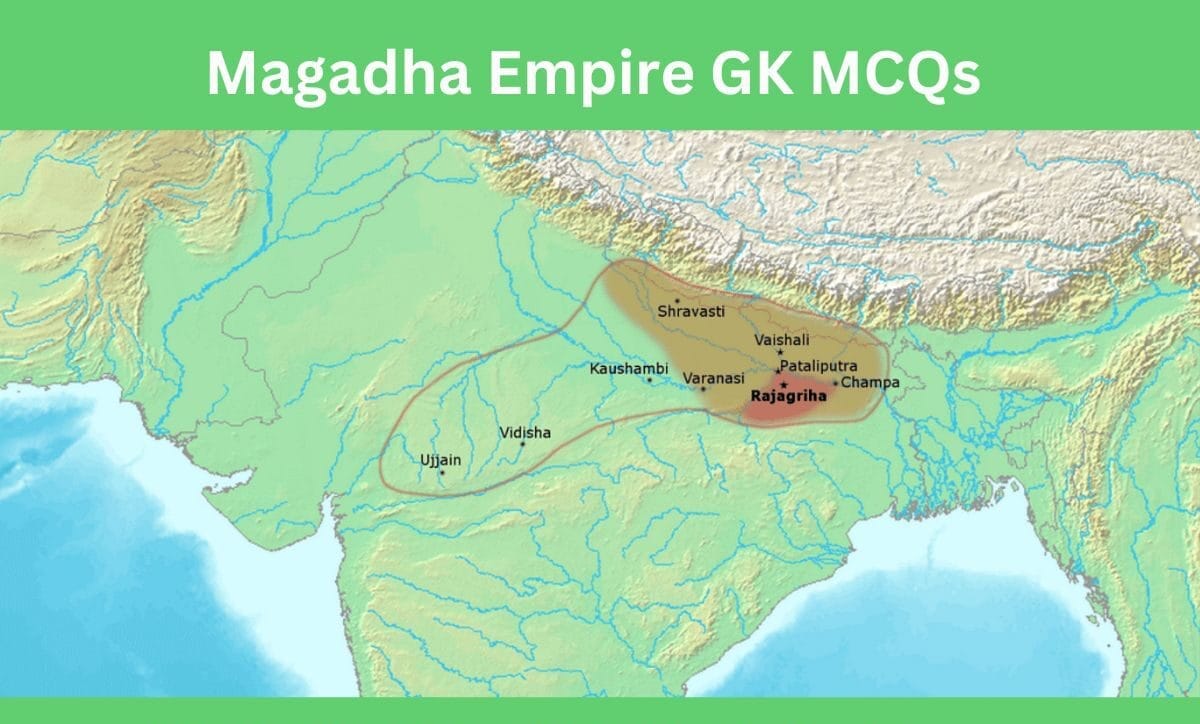
11. Which of the following founded the new capital at Patliputra (modern-day Patna) in Magadh?
- Bimbisara
- Ajatashatru
- Udayin
- Shishunaga
Show Answer
Correct Answer: Udayin
Udayin, also known as Udayabhadra, founded the new capital at Patliputra around 460 BCE to establish a strategic location at the confluence of the Ganga and Son rivers.
12. Which of the following temporarily shifted the capital of Magadh to Vaishali?
- Udayin
- Shishunaga
- Kalasoka
- Mahapadma Nanda
Show Answer
Correct Answer: Shishunaga
Shishunaga, after defeating Avanti (Pradyota Dynasty), temporarily shifted the capital of Magadh to Vaishali. This move ended the longstanding rivalry between Magadh and Avanti.
13. Which of the following was also known as Kakarvarna?
- Kalasoka
- Shishunaga
- Udayin
- Ajatashatru
Show Answer
Correct Answer: Kalasoka
Kalasoka, the son and successor of Shishunaga, was also known as Kakarvarna according to the Puranas. The Second Buddhist Council was held in Vaishali during his reign.
14. Which of the following was the first non-Kshatriya dynasty?
- Haryanka Dynasty
- Shishunaga Dynasty
- Nanda Dynasty
- Maurya Dynasty
Show Answer
Correct Answer: Nanda Dynasty
The Nanda Dynasty, led by Mahapadma Nanda, was the first non-Kshatriya dynasty in ancient India. Mahapadma Nanda, also known as Ugrasena, expanded the empire with a powerful army.
15. Which of the following were considered adharmikas?
- Mauryan
- Nandas
- Shishunaga
- None of the above
Show Answer
Correct Answer: Nandas
The Nanda Dynasty, including Mahapadma Nanda, was considered adharmika, meaning they did not adhere to the norms of Dharma due to Mahapadma Nanda’s non-Kshatriya lineage.
16. Which of the following was known as ekarat?
- Mahapadma Nanda
- Dhanananda
- Kautilya
- None of the above
Show Answer
Correct Answer: Mahapadma Nanda
Mahapadma Nanda, the first empire builder of India, was known as ekarat, signifying his dominance over other ruling princes, and sarva-kshatrantaka, symbolizing his conquest over Kshatriyas.
17. Which of the following brought an image of Jina as a victory trophy?
- Shishunaga
- Kalasoka
- Mahapadma Nanda
- Dhanananda
Show Answer
Correct Answer: Mahapadma Nanda
Mahapadma Nanda acquired the kingdom of Kalinga and brought back an image of Jina (an enlightened being) as a victory trophy. He also expanded the empire to include Kosala.
18. Which of the following built canals and undertook extensive irrigation work?
- Kalasoka
- Mahapadma Nanda
- Dhanananda
- Chandragupta Maurya
Show Answer
Correct Answer: Mahapadma Nanda
Mahapadma Nanda was known for his systematic tax collection and extensive irrigation work. He built canals and conducted significant irrigation projects.
19. Which of the following is credited with the invention of Nandopakramani?
- Shishunaga
- Kalasoka
- Mahapadma Nanda
- Dhanananda
Show Answer
Correct Answer: Dhanananda
Dhanananda, the last major king of the Nanda dynasty, is credited with the invention of Nandopakramani, a specific measuring standard. He is also identified with the Agrammes or Xandrames mentioned in Greek classical writings.
20. Chandragupta Maurya under the able guidance of Kautilya uprooted which of the following Kings?
- Shishunaga
- Kalasoka
- Mahapadma Nanda
- Dhanananda
Show Answer
Correct Answer: Dhanananda
Dhanananda, an oppressive and arrogant ruler who imposed heavy taxes on the common people, was uprooted by Chandragupta Maurya under the guidance of Kautilya (Chanakya). This led to the establishment of the Maurya empire.


